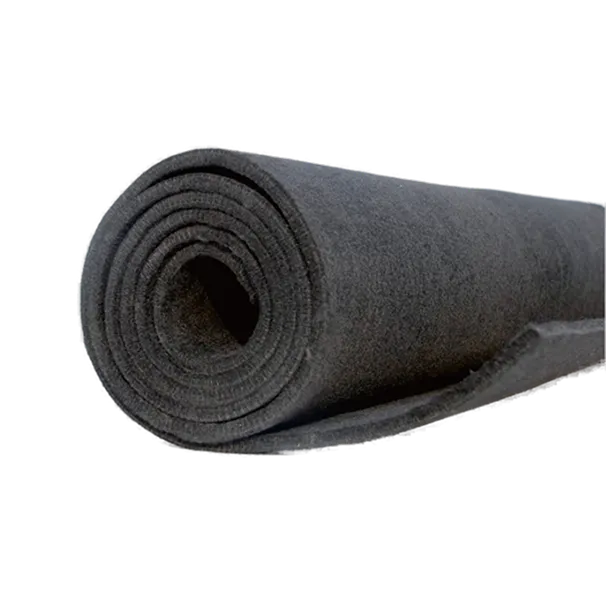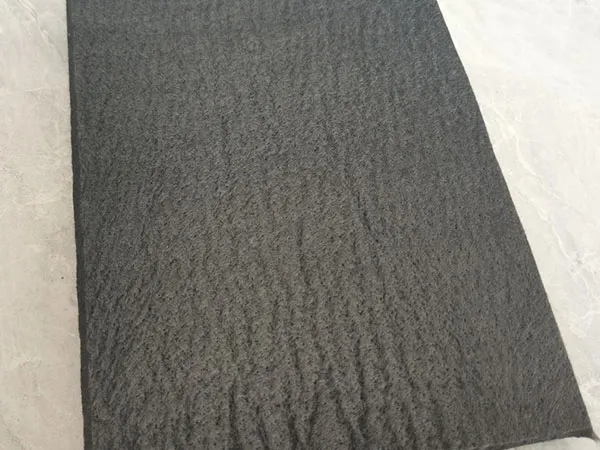Time: 2025-05-21 02:47:10 Source: Cangzhou Carbon Technology Co., Ltd.
Graphite soft felt is a flexible, high-temperature insulation material made from carbon or graphite fibers. Its performance is characterized by a unique combination of thermal, chemical, mechanical, and electrical properties.

High-Temperature Stability: This is its primary advantage. It can withstand extremely high temperatures, typically up to 2500°C (4532°F) and even higher (up to 3000°C) for short durations in inert or vacuum atmospheres. In oxidizing atmospheres, its use is limited to around 400-500°C.
Low Thermal Conductivity: It's an excellent thermal insulator, especially in vacuum or inert gas environments. Thermal conductivity typically ranges from 0.08 to 0.2 W/m·K at room temperature, and it generally decreases with increasing temperature up to a certain point (around 1500-2000°C) before radiation effects start to dominate and increase apparent conductivity.
Low Specific Heat: It heats up and cools down relatively quickly, which can be advantageous for rapid thermal cycling.
Good Thermal Shock Resistance: Due to its fibrous nature and low coefficient of thermal expansion, it can withstand rapid temperature changes without cracking or degrading.
Low Outgassing (after proper treatment): When properly purified and baked out, it exhibits low outgassing, making it suitable for high-vacuum applications.
High Purity: Typically has a high carbon content (often >99%, with some grades >99.9%) and low ash content. This minimizes contamination in high-temperature processes.
Chemical Inertness: Highly resistant to most corrosive chemicals, acids, bases, solvents, and molten metals (except strong oxidizing agents or metals that form carbides at very high temperatures).
Non-Wetting: Generally not wetted by many molten metals, which can be beneficial in metallurgical applications.
Flexibility and Conformability: Being "soft," it can be easily bent, wrapped around complex shapes, or compressed to fit into tight spaces.
Low Density: Typically very lightweight (e.g., 0.08 - 0.2 g/cm³), which reduces the overall weight of insulation systems.
Low Strength: It has low tensile and compressive strength. It's not a structural material and can be easily torn or damaged if handled improperly.
Compressibility: It can be compressed, but its recovery after compression might be limited, especially after high-temperature exposure.
Machinability: Can be easily cut with knives, scissors, or dies to desired shapes and sizes.
Electrical Conductivity: Graphite is electrically conductive. This can be an advantage (e.g., for use as heating elements, electrodes, or EMI shielding) or a disadvantage if electrical isolation is required (requiring careful design to prevent short circuits).
High Porosity and Surface Area: Its fibrous structure results in high porosity, contributing to its insulating properties and providing a large surface area.
Dusting/Shedding: Can shed fibers, especially when handled. This can be a concern in clean environments. Some felts are treated or have surface layers to minimize dusting.

Insulation in vacuum furnaces, inert gas furnaces, and crystal growing furnaces.
Heat shields and linings.
Backing strips for welding and brazing.
Electrode material in some electrochemical applications (e.g., flow batteries).
Gas diffusion layers (GDLs) in fuel cells (though specialized types are often used).
Filtration of hot gases or corrosive liquids.
Limitations/Considerations:
Oxidation: Degrades rapidly in oxidizing atmospheres above ~400-500°C.
Handling: Can be fragile and prone to shedding fibers.
Electrical Conductivity: Needs to be considered in designs to avoid short circuits.
Cost: Can be more expensive than some conventional insulation materials, but its high-temperature performance often justifies the cost.
In summary, graphite soft felt offers exceptional high-temperature insulation performance in non-oxidizing environments, combined with chemical inertness and flexibility. Its main limitations are its susceptibility to oxidation and relatively low mechanical strength.